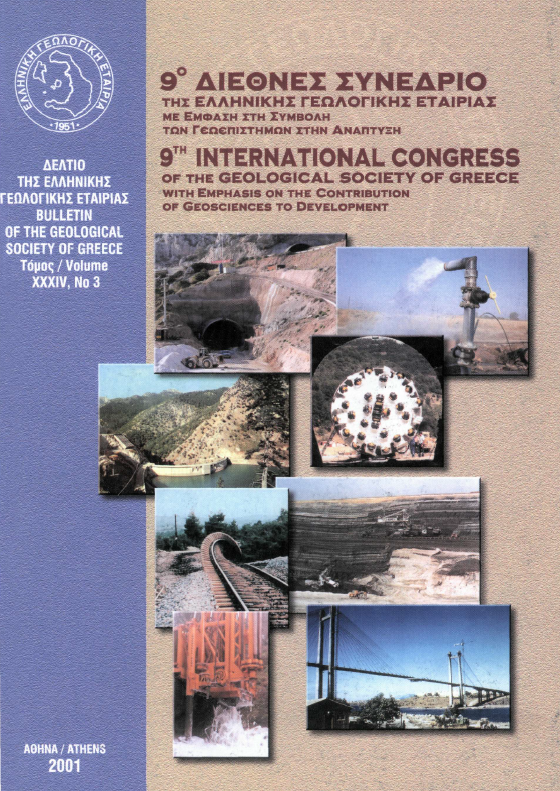Mineralogical composition and physical characteristics of marly soils from Heraklion Crete

Abstract
The mainly white-yellow marly soils studied present medium degree of consolidation and induration. The predominant grain size of the non - carbonate constituents is that of silt varying from 34 to 64%. According to the textural classification of soils of the SSDS the samples are mainly silty-clay loams with moisture capacity 30-40%. In the untreated samples in decreasing abundance the following minerals predominate: calcite (31-59%), clay minerals (20-34%) and quartz (12-20%). In the clay fraction (<2μπι) in decreasing abundance the following clay minerals (in discrete and interstratified phases) predominate: illite, smectite and vermiculite. Chlorite and kaolinite are missing. Mineralogically the marly soils are immature, because of the extended presence of Fe-Mg minerals (i.e. amphiboles, pyroxenes and clay minerals). According to the Unified Soil Classification System of the ASTM the studied marly soils mainly belong to the groups MH and CH (inorganic silts and inorganic clays respectively with high plasticity and liquid limit >50%), as well as to the group CL (inorganic clays with low plasticity and liquid limit <50%). The degree of consolidation and induration, as well as of compaction of these soils is medium. They contain significant amounts of discrete or interstratified smectite and mainly present high to very high swelling potential and activity between 0.5 and 2.0. It is concluded that specific precautions must be taken into account, when it is unavoidable the foundation of various constructions on these marly soils, because they swell and shrink extensively.
Article Details
- How to Cite
-
ΤΣΙΡΑΜΠΙΔΗΣ Α., & ΠΑΠΑΛΙΑΓΚΑΣ Θ. (2001). Mineralogical composition and physical characteristics of marly soils from Heraklion Crete. Bulletin of the Geological Society of Greece, 34(3), 851–858. https://doi.org/10.12681/bgsg.17097
- Section
- Mineralogy and Crystallography

This work is licensed under a Creative Commons Attribution-NonCommercial 4.0 International License.
Authors who publish with this journal agree to the following terms:
Authors retain copyright and grant the journal right of first publication with the work simultaneously licensed under a Creative Commons Attribution Non-Commercial License that allows others to share the work with an acknowledgement of the work's authorship and initial publication in this journal.
Authors are able to enter into separate, additional contractual arrangements for the non-exclusive distribution of the journal's published version of the work (e.g. post it to an institutional repository or publish it in a book), with an acknowledgement of its initial publication in this journal. Authors are permitted and encouraged to post their work online (preferably in institutional repositories or on their website) prior to and during the submission process, as it can lead to productive exchanges, as well as earlier and greater citation of published work.



